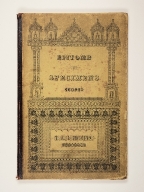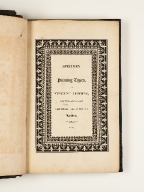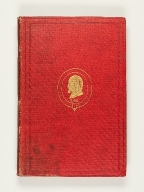|
REFINE
Browse All : Type specimens and Type and type-founding - England - London of London
1-3 of 3
Title
Epitome of specimens from the foundry of V. & J. Figgins
Creator
V. & J. Figgins
Summary
Vincent Figgins established a successful type foundry in London in 1792. Following his retirement in 1836, his sons, Vincent and James, continued the foundry, managing it together until 1860. This catalog includes: type metal, wood type, cuts, ornaments, and rule. It also includes examples of Persian, Sanskrit, Bengali, Coptic, Syriac, Hebrew, Greek, German, and Saxon type, as well as music type.
Title
Specimen of printing types
Creator
Figgins, Vincent, 1770-1844
Summary
Vincent Figgins established a successful type foundry in London in 1792. His foundry's 1815 specimen book is considered important for the many display types it contains. Several variants of this specimen book bearing an 1815 title page, but containing additional specimens produced after 1815, have been reported. For example, Mosley lists five other copies, printed on different papers with a foliation of between 79 and 124 leaves. Made up of single leaves, most books have the specimens arranged by type-size. This catalog includes a foreword signed by Figgins (leaf 2) and a folded leaf with specimens of "Newspaper founts" dated 1817. In addition to typefaces, it includes ornamental rules. It also includes examples of Greek and Syriac type.
Title
Specimens of printing types
Creator
P.M. Shanks & Sons, Ltd.
Summary
P.M. Shanks & Co, or the Patent Type Foundry was based in 31 Red Lion Square in London from 1881. It later was known as P.M. Shanks and Sons, Ltd. until its merger with R.H. Stevens to form Stevens, Shanks & Sons Ltd. This catalog, issued around 1912, includes: type metal, cuts, rule, and ornaments, including an extensive set of borders. It also includes a sample of music type.
1-3 of 3
|


